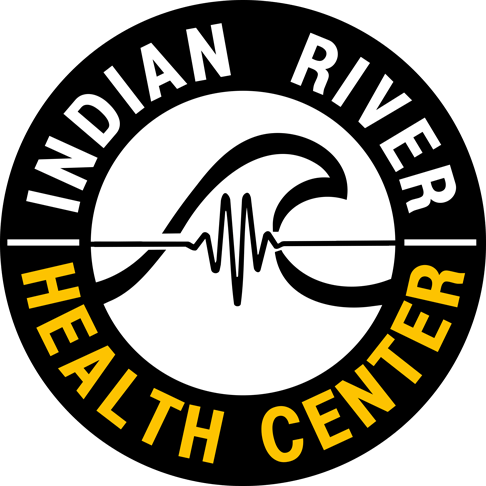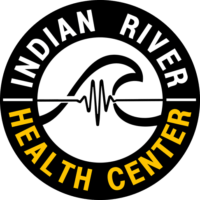Chiropractic Care for Slipped Disc in Vero Beach, FL
Slipped Disc in Vero Beach, FL: Chiropractic care is a nonsurgical, non-invasive treatment option for bulging, ruptured, herniated or slipped discs. But what is a chiropractor’s approach to treating a herniated disc? Before we get to that, we need a quick review of what a herniated disc is.
What is a “Slipped” Disc? Is It the Same as a Herniated Disc?
With the exception of the first 2 vertebrae in the neck—the atlas (C1) and the axis (C2)—there is an intervertebral disc between each vertebra of the spine. Discs act as a shock absorber and a shock distributor and provide flexibility.
Imagine if you jump up and down. What would happen to the stack of bony vertebrae that make up the spine without the cushioning and support of these discs? Now, move your back from side to side. Again, you can visualize the give and take of the discs between the vertebrae. Without these discs, your spine couldn’t function.
Intervertebral discs don’t really “slip”—although the phrase “slipped disc” has come into popular usage to refer to bulging, ruptured, or herniated discs. Throughout this article, we’ll refer to herniated discs, which is the more correct term.
Your discs are made up of the annulus fibrosus (the tough outer layer) and the nucleus pulposus (which contains a soft, gelatin-like center). When cracks occur in the outer layer of the disc, the material inside of the disc can begin to push out. Numerous factors can cause a disc to herniate.
For example, there may be too much stress on the disc due to poor posture or from being overweight. In fact, a herniated disc can be caused by a combination of factors or a physical injury. Dr. Ryan D. Hess, DC, CVSMT, CoAC and Indian River Health Center are your slipped disc chiropractic office. We aren’t saying that we are better than any other chiropractic office or medical office, but after years of experience and with Dr. Hess’ personal experience with disc herniations, we have provided significant recovery from disc pains.
Chiropractic Care and Herniated Discs at Indian River Health Center
Dr. Hess can help address back pain and other herniated disc symptoms. Your initial appointment at Indian River Chiropractic will be through to include your medical history, physical – orthopedic – neurologic exams, X-rays (if needed), and a non-invasive computed based test (sEMG, thermal imaging, PWP and dROM).
Important Questions Addressed at Our Vero Beach Chiropractic Center
Dr. Hess will look for several things. There are important questions the orthopedic and neurological exams can help answer:
- Are the reflexes intact?
- Is there a loss of muscle strength or signs of muscle wasting?
- Is there loss of sensation along the path of a nerve?
- Are there muscle imbalances?
- Is there nerve irritation?
- How is the spinal biomechanics functioning?
- Is the spine structurally sound?
Dr. Hess will also carefully look at your posture, and he may order an X-ray or MRI, if necessary, to help with the diagnostic process.
Slipped Disc Chiropractic Evaluation of the Spine
Dr. Hess will evaluate the entire spine. Even if you only have lower back pain an exam of your neck, and mid-back will be done. Dr. Hess wants to see how well your spine is functioning overall, and remember: What happens in one area of your spine can influence other parts of your spine and/or body. We all know the song, “ the neck bone is connected to the backbone.”
After reviewing this information, Dr. Hess can determine if you have an intervertebral disc injury. The type of disc injury you have will determine what treatments Dr. Hess will use to address your symptoms.
Some patients are not good candidates for some types of chiropractic care treatments. For example, if you have cauda equina syndrome (a condition in which you lose control of your bowel/bladder with an accompanying intervertebral disc injury), then you will need immediate surgical medical care as this is something that cannot be treated by chiropractic.
In addition, if Dr. Hess finds that you have an advanced loss of strength, sensation, reflexes, and other unusual neurological findings, then he will refer you to a neurologist and spine surgeon.
However, most intervertebral disc injuries are related to a herniated disc, and Dr. Hess can provide you with various treatment options to address your pain and other symptoms.
To treat a herniated disc, Dr. Hess will develop a treatment plan that may include spinal manipulation or decompression—also known as adjustments and traction—and other chiropractic techniques to help ease your herniated disc symptoms. This will be an individualized treatment plan, but it may include manual therapy and therapeutic exercises.
The specifics of what are in your treatment plan are particular to your pain, level of activity, overall health, and what Dr. Hess recommends based on his clinical experience. As with any treatment option, do not hesitate to ask questions about what chiropractic treatments are being recommended and why. You want to make sure you understand how the treatment can help relieve your pain. Chiropractic treatment is safe and effective for most patients.
Some Examples of Chiropractic Techniques Used for Herniated Discs
Flexion-Distraction Technique for Herniated Discs
A common chiropractic technique is a flexion-distraction technique, which can be used to help address herniated disc symptoms. This is the preferred method utilized by Dr. Hess.
Flexion-distraction involves the use of a specialized table that gently “distracts” or stretches the spine. This allows Dr. Hess to isolate the affected area while slightly “flexing” the spine using a pumping rhythm. This technique provides hydration to the desiccated (dehydrated) disc. Also, negative pressure from the distraction of the vertebrae can relocate the herniated disc.
There is usually limited to no pain associated with this treatment. The gentle pumping to the painful area allows the center of the intervertebral disc (called the nucleus pulposus) to assume its central position in the disc.
Flexion-distraction may also improve disc height. This technique can help move the disc away from the nerve, reducing inflammation of the nerve root, and eventually any associated pain and inflammation into the leg (if there is any related to your herniated disc).
With flexion-distraction, you generally need a series of treatments combined with adjunctive manual therapy, electrical muscle stimulation, physiotherapy, nutritional supplementation, and at-home stretches and exercises (Dr. Hess will guide you). Gradually, specific exercises and nutritional recommendations will be incorporated into your treatment plan. Dr. Hess will monitor you throughout the treatment plan and will be available for any questions.
Spinal Decompression Techniques for Herniated Discs
Dr. Hess also uses spinal decompression technique to treat herniated disc symptoms. The spinal decompression machine is programmed based on your clinical exam. Length, time, and direction of a static or oscillating pull will be determined. Gentle side or oblique stretches may also be used. This is common for off-center disc herniations. These will allow changes in mechanics to draw your disc away from the nerve it may be pressing on.

